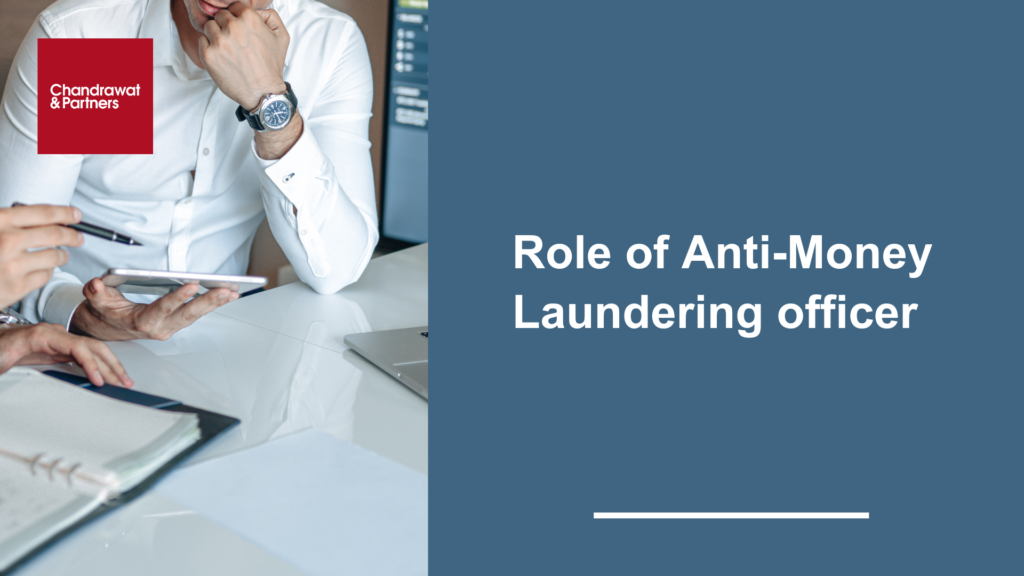Edit Content
Edit Content
Edit Content

The employee who works to combat financial crime for their companies is called Money Laundering Reporting Officer (“MLRO”). They play a crucial role in providing anti-money laundering and counter-terrorist financing regulations. MLRO is responsible for informing the relevant authorities about financial crimes or any suspicious actions. The MRLO is the individual responsible for making decisions regarding anti money laundering (“AML”) reporting, which can impact the company’s relationship with its customers and its exposure to criminal, legal, regulatory and disciplinary actions. The MRLO oversees all activities conducted within the AML framework. In order to effectively fulfill these responsibilities, the MRLO should have the necessary authority and access to all client files and business information. This enables them to trace processes and make informed decisions based on the available information.
As a best practice, MLRO of a larger organization or corporation should maintain independence from business operations, including activities related to the receipt, transfer or payment of funds. The MLRO should focus on independent monitoring and oversight of AML processes. Furthermore, the MLRO should have direct access to individuals who make business decisions within the organization, such as senior management or the board of directors. This ensures effective communication and facilitates the MLRO’s ability to address AML concerns and report findings directly to key decision-makers.
The major responsibility of the MLRO is to manage the AML and regulatory compliance related tasks and responsibilities using a risk-based approach. The major responsibilities of MLRO include deciding whether sufficient suspicion is required to generate reports on money laundering and adequately disclose it to the relevant authorities. The following responsibilities are undertaken by MLRO-
Since financial regulations may extend criminal liability for AML offenses to corporate persons, it is important that MLROs have executive level managers. In practice, this means that MLROs must be able to effectively communicate important AML/CFT information to board members and understand when to escalate compliance incidents so that suspicious activity reports are filed with the appropriate authorities.
An MLRO’s relationship with the executive level manager may be complex. Firms should think carefully about how to embed an MLRO within their governance infrastructure, considering any relevant personal liabilities or obligations. Ultimately, an MLRO should be able to exert effective influence over an executive board and be able to instill a strong, company-wide compliance culture.
The MLRO, also referred to as a “nominated officer,” assumes the responsibility of supervising the AML systems within their company and acts as a crucial point of contact for inquiries related to AML. This role carries substantial obligations, as the MLRO requires access to the company’s financial records to ensure effective oversight. Additionally, they are responsible for making strategic decisions concerning money laundering and financial crime activities.
The responsibilities of the MLRO can lead to substantial legal repercussions, including civil and criminal actions. MLRO bears considerable personal liability within their organizations. In cases where AML safeguards are considered insufficient, the MLRO may face substantial fines and imprisonment. Given the critical nature of the MLRO position within a company, it is crucial for senior executives to fully comprehend and carefully consider the role and its implications.
For more information or queries, please email us at
[email protected]

Managing Partner
Copyright © Chandrawat & Partners. All Rights Reserved.
Copyright © Chandrawat & Partners. All Rights Reserved.

Chandrawat & Partners stands as a dynamic and rapidly expanding full-service firm, specializing in the delivery of exceptional professional and corporate services to a diverse clientele, both foreign and local. We proudly represent companies and individuals across a wide spectrum of sectors through distinct entities established in various countries worldwide.
ASIA
AFRICA
EUROPE
NORTH AMERICA
SOUTH AMERICA
OCEANIA
Chandrawat & Partners uses cookies to run our site and improve its usability.
By using our site you agree to our use of Cookies.